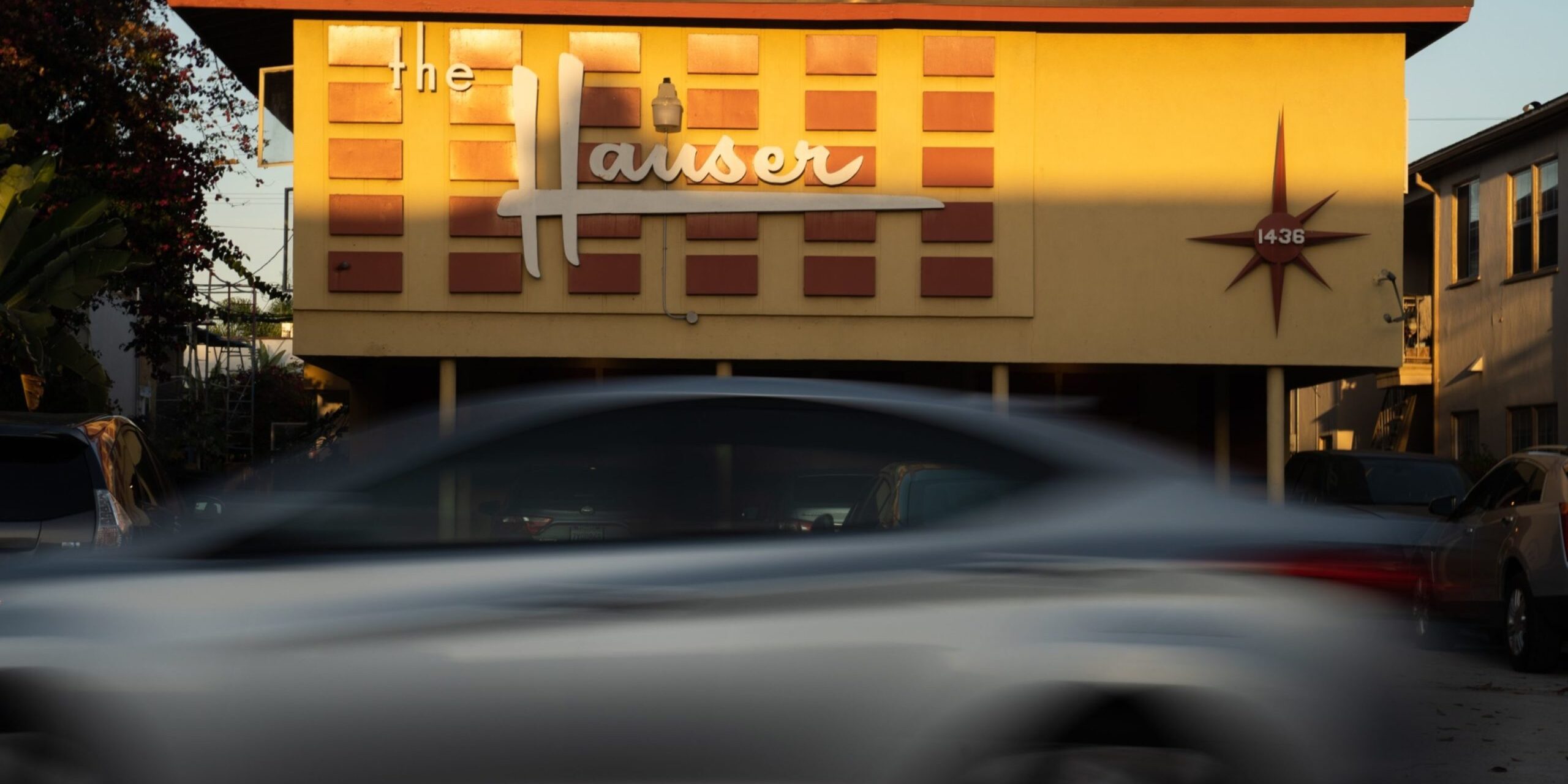A Charged Message for Brooklyn, in Neon

The neon message of inclusivity designed by artist Tavares Strachan is being installed this month at Barclays Center. Photographer: Tavares Strachan
From Bloomberg CityLab: The illuminated artwork designed by Tavares Strachan for the front of the Barclays Center reflects the changes that the borough has undergone since the arena opened a decade ago.
The text isn’t complicated, but the message thrums with meaning. Two neon signs, one pink and one white, are going up at the intersection of Atlantic and Flatbush Avenues in Brooklyn, on the plaza outside the Barclays Center sports arena. “We belong here,” one declares. Its twin narrows the scope: “You belong here.”
An illumination designed by the artist Tavares Strachan, You Belong Here/We Belong Here might read like an expression of solidarity directed to the protesters who frequently gathered in Barclays Center plaza following the death of George Floyd in 2020. But it could also sound like a pointed rebuke to a different crowd: Years back, this site was the target of demonstrations against the construction of the Atlantic Yards development, which the arena anchors. In 2006, at least 2,000 people, including Brooklyn residents and actors Steve Buscemi and Rosie Perez, assembled to speak out against the housing displacement that this project threatened to bring.
Neon Museum to add Planet Hollywood sign to collection

From news3lv.com: LAS VEGAS — The Neon Museum is adding an important piece to its collection.
The Planet Hollywood restaurant sign was dismantled last week and taken to the museum.
The sign used to sit on a pedestal in front of Caesars Palace Forum Shops. It had been there since 1994.
A 240-foot tower once rose in Minneapolis – advertising Coca-Cola

Hennepin County Library
From The Star Tribune: The tower of the old Exposition Building featured neon-lit, 54-foot bottles of Coke beneath the word “Coca-Cola” in 16-foot script lettering.
In the 1940s, motorists crossing the 3rd Avenue Bridge from downtown Minneapolis were greeted by one of the most remarkable advertising signs ever created in the Twin Cities.
Mounted on the sides of a 240-foot tower, the short-lived sign touted Coca-Cola in a very big way.
It featured neon-lit, 54-foot bottles of the popular beverage beneath the word “Coca-Cola” in 16-foot script lettering. Like the classic Grain Belt Beer sign that now adorns Nicollet Island, the soda pop sign was hard to miss.
Historic 99 signs posted in Madera

Madera City Workers Toby Garcia, right, and Angel Ruiz put the finishing touches on an historic Highway 99 sign along Gateway Drive. Madera Tribune
From The Madera Tribune: The City of Madera, in partnership with the non-profit Historic Highway 99 Association of California, announced the completed installation of six new Historic US Route 99 signs on Gateway Drive, which commemorates the former major U.S. highway.
Known to most as Gateway Drive, the route was originally a major thoroughfare for transporting agricultural produce — vegetables, livestock fodder, and cattle — from Imperial Valley to major cities in California, and along the west coast. Funding for the signs was obtained through private donations made to the association, and the City’s Public Works Department moved swiftly to install them once received.
According to Michael Ballard, President of the Historic Highway 99 Association of California, the project aims to increase public awareness of the route’s existence and historical significance.
How Los Angeles Became the City of Dingbats

The Hauser, a “dingbat” apartment building in the Mid-City neighborhood of Los Angeles. The distinctive low-rise structures were built in the 1950s and ’60s to accommodate a boom in upwardly mobile Angelenos — and their cars. Photographer: Bing Guan/Bloomberg
From Bloomberg CityLab: The colorful carport-equipped apartment buildings offered affordable — and sometimes stylish — digs for generations of L.A. dreamers.
Faced with a housing shortage, Los Angeles once had a solution. From the San Fernando Valley to Culver City to La Cienega Heights, developers in the 1950s and ’60s tore down thousands of older buildings and filled in virtually every square foot with aggressively economical two- or three-story apartment complexes — known locally as dingbats.
Subdivided into as many units as the lots could accommodate — usually between 6 and 12 — most of these stucco boxes left little room outdoors, except for an exposed carport slung beneath the second floor. This new format for affordable multifamily living became nearly as ubiquitous as the single-family tract housing that iconified the much-mythologized Southern California suburban lifestyle.


